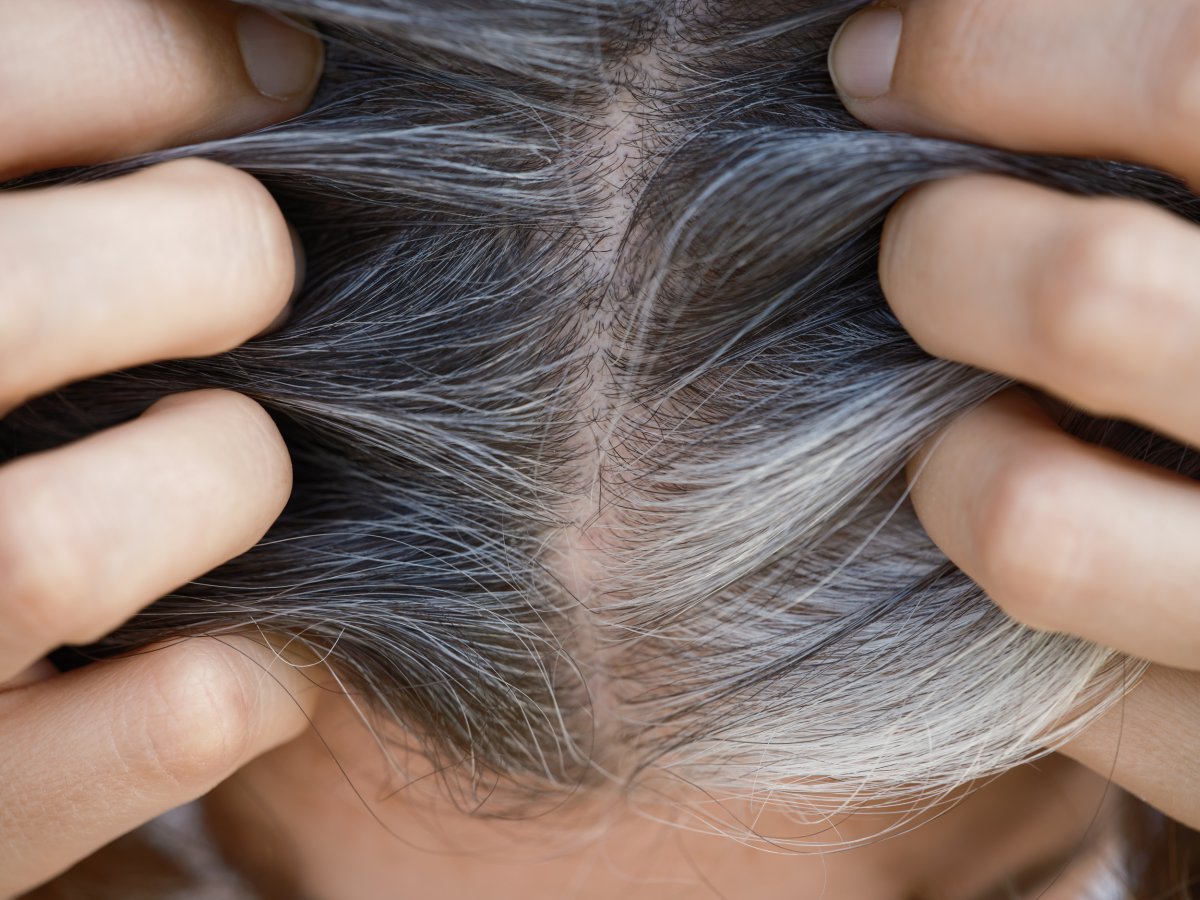Gray hair is often associated with aging, but for many millennials and Gen Zers, those frosty strands are showing up far earlier than expected. While genetics and stress are the usual suspects, experts suggest another overlooked factor could be at play: mineral deficiencies.
Catarina Orr-Evans, an integrative health coach based in Columbus, Ohio, recently went viral on TikTok with a video explaining how mineral imbalances might contribute to premature graying in young people. With nearly 8 million views, her insights are sparking curiosity and challenging common assumptions about why gray hair sometimes appears so early.
A 2021 study published in the Journal of Clinical and Aesthetic Dermatology revealed that hair graying typically begins in the mid-30s for Caucasians, the late 30s for Asians, and the mid-40s for Africans. However, social media is painting a different picture, with users as young as 19 showcasing their gray roots and questioning why it's happening so soon.
Could premature graying be a sign of deeper health issues? Orr-Evans believes it might be, and now she's encouraging young people to explore the connection between mineral depletion, stress and hair health.

Backed by Science
In her video, she references findings from Dr. Paul Eck, a scientist who dedicated hundreds of thousands of hours to studying hair analysis patterns and mineral ratios.
According to Eck, gray hair often reflects mineral imbalances in the body. His research shows that dark hair gets its color from minerals like manganese and iron, which also aid energy production. Aging, stress, and fatigue can deplete these minerals, causing them to be replaced by calcium and zinc, leading to gray or white hair. Sudden stress can accelerate this process by "borrowing" minerals from the hair. While hair dyes mask gray, restoring mineral balance could potentially reverse it naturally.
Supporting this idea, researchers from the Department of Dermatology at Isfahan University of Medical Science (2012) investigated the connection between blood levels of iron, copper and zinc and premature graying in individuals under 20. They found significantly lower copper levels in patients with early gray hair, highlighting a possible link between copper deficiency and graying. However, further research is needed to fully understand this relationship.
Orr-Evans told Newsweek: "A lot of people saw that video and took away from it that they just needed copper, and that also isn't a good idea, especially for women. A lot of women are dealing with high estrogen issues, and copper and estrogen have a connection—if one increases, so does the other. Too much copper can deplete zinc."

'It's No Surprise'
Dr. Viktoryia Kazlosukaya, a board-certified dermatologist and hair loss specialist based in New York City, spoke to Newsweek and shared her first-hand experience of witnessing this issue.
"It's no surprise—copper, zinc and iron play a role in tyrosinase activity," she said. "This is an enzyme essential for pigment synthesis.
"Premature graying is often observed in patients with iron-deficiency anemia, and we frequently see clinically that iron supplementation can restore hair color to normal.
"Oxidative stress is another significant factor in premature graying, but the extent to which it contributes compared to other factors remains unclear. Copper helps our body combat oxidative stress, and chronic stress may deplete copper levels, potentially leading to premature gray hair."
Experts don't dispute there may be other causes of premature gray hair, including genetic conditions linked to low copper levels.
Kazlosukaya said: "Menkes disease is caused by a defect in the gene responsible for synthesizing the protein that transports copper. Patients with Menkes disease usually have brittle, sparse, and white or grey hair."
How to Test for Mineral Deficiencies
For those without a medical condition, Orr-Evans says a test is a good starting point. She explained that hair tissue mineral analysis (HTMA) is the most effective way to assess mineral status at the cellular level because hair, as a living tissue with mitochondria, reflects how cells manage minerals. In contrast, blood tests only show mineral levels in the bloodstream, acting as a snapshot of the body's "highway" system, rather than revealing what's happening in the cells or tissues.
Advice for Those in Their 20s/30s Going Gray
Orr-Evans provided the following advice, starting with ordering an HTMA test to determine if gray hair is due to mineral deficiencies or toxicities.
"Most people hear 'focus on replenishing with minerals,' and they think they need to buy supplements off the shelf, which isn't the best source of minerals," she said.
"Most supplements contain synthetic forms or poorly absorbed forms, and food is the best source of minerals because it is better absorbed in its natural form.
"Plus, taking random supplements you might think you need could offset other minerals.
"For example, sodium and potassium play off of one another. Calcium and magnesium. Calcium and potassium. Zinc and copper, and so on. If one goes up too much, the other will further drop down."
She told Newsweek that "a great place to start would be to work on building up cellular nourishment." You can do this by:
- Focusing on building cellular nourishment with seasonal, whole and minimally processed foods.
- Cooking foods in digestible forms to maximize nutrient absorption.
- Choosing nutrient-dense options like grass-fed and pasture-raised products or shopping at farmers' markets and regenerative farms.
- Staying hydrated with spring water and adding sea salt to your meals.
- Incorporating regular movement and physical activity into your routine.
- Actively managing and discharging stress to support overall health.
- Nourishing your body to balance minerals and build stress resilience.
- Understanding that while reversing gray hair may be possible, it takes time and consistent effort; aim to slow or prevent further graying.
Is there a health issue that's worrying you? Let us know via health@newsweek.com. We can ask experts for advice, and your story could be featured on Newsweek.






.png)













 English (US) ·
English (US) ·